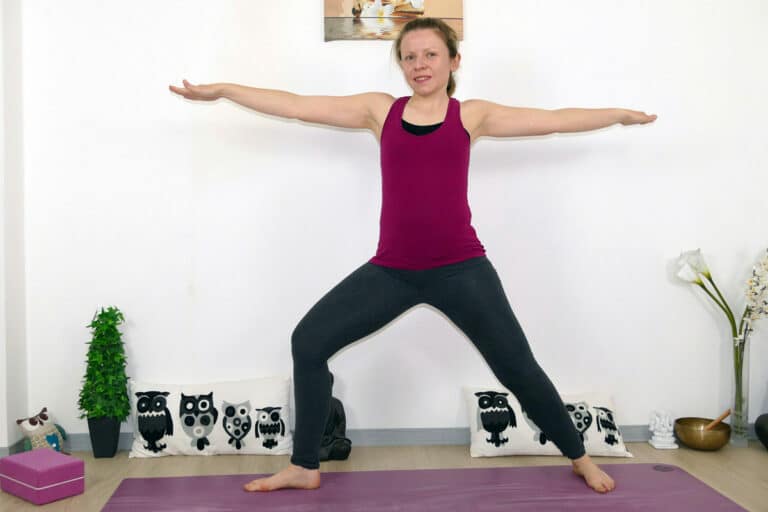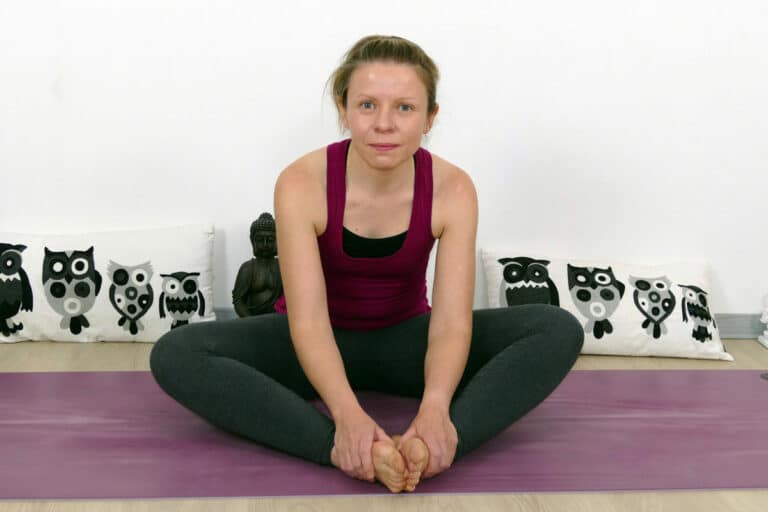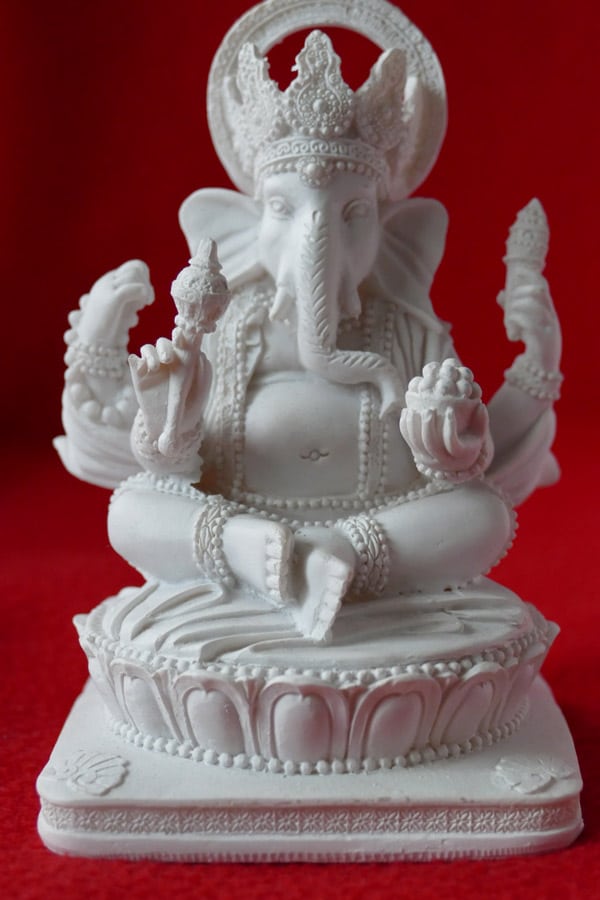Strengthening the Root Chakra: How to Open the First Chakra, Muladhara
Strengthening and opening the Root Chakra (Muladhara) brings balance to the Root Chakra, the first of the seven main chakras, located at the base of the spine. It connects us to the physical world and is associated with the Earth element. This chakra relates to our most basic needs for survival, safety, grounding, and fundamental trust.
Here is where the flow of Kundalini energy begins through the body. Together with the second and third chakras, it is one of the more physically oriented chakras.
The Sanskrit word for the Root Chakra is Muladhara. “Mula” means “root,” and “adhara” means “support” or “foundation.” It forms our base and is closely linked to our fundamental needs. If our foundation is unstable, we might doubt our right to exist and feel uncertain about our basic needs being met.
The Root Chakra is strongly connected to the body and governs the legs, feet, skeleton, kidneys, and large intestine.
The Meaning of the Root Chakra
Muladhara forms the foundation for all higher chakras. Just as a plant needs roots that reach deep into the earth to grow toward the sky, we need strong roots for our personal growth.
It supports all other chakras and contains the dormant Kundalini energy. This chakra helps us feel grounded and stable. It is the counterpart to the Crown Chakra, the highest chakra. Sushumna, the central energy channel, begins at Muladhara, marking the starting point for Kundalini’s journey up to the Crown Chakra.
Muladhara, our root, forms during early childhood through our relationships with our caregivers, shaping our physical identity. Traumatic experiences in childhood, such as separation from the mother after birth, abandonment, poor bonding, malnutrition, or physical abuse, can lead to imbalances in the Root Chakra.
The Root Chakra in Balance
A healthy Root Chakra expresses itself through grounding, trust, security, and a sense of connectedness. We feel safe within our body and in the world, knowing that we are enough and have enough.
When the Root Chakra is balanced, we can take responsibility for ourselves and avoid falling into a victim mindset.
Imbalances in the Root Chakra
A blockage in the Root Chakra can indicate that basic needs are unmet, leading to feelings of fear, insecurity, confusion, or even addiction. We may feel disconnected from our body and out of place in the world.
If the Root Chakra is too strong (excessive), we tend to cling to things, whether it’s weight or material possessions. We may fear change, have an overly pronounced need for security, and become sluggish.
If the Root Chakra is weak, we may experience anxiety, restlessness, struggle with eating disorders (like anorexia), frequently face financial difficulties, and have trouble setting boundaries.
Physical Symptoms of an Imbalanced Root Chakra:
- Overweight
- Constipation
- Adrenal disorders
- Sciatica
- Arthritis
- Kidney stones
- Osteoporosis
- Bone issues
- Autoimmune diseases
Emotional/Psychological Symptoms:
- Anxiety
- Insecurity
- Lack of trust
- Low self-esteem
- Anorexia, bulimia
- High tension
- Burnout
- Self-harm
- Financial difficulties
Strengthening and Balancing the Root Chakra
To connect with the Root Chakra, we need to learn how to connect with our body. This can be achieved through touch or movement. Physical touch, like massages or bodywork, plays an important role in healing the Root Chakra.
Physical movement, such as yoga, running, hiking, or other activities like dancing, aerobic exercises, and sports, can help bring us in touch with our body. Even better if we can do these outdoors, as activities like outdoor walks or gardening, which connect us with the earth, can also strengthen the Root Chakra.
And even better: walking barefoot is the best therapy for the Root Chakra! We’re usually barefoot in yoga, but try integrating barefoot walking into your daily life as well.
Other ways to balance the Root Chakra include using healing stones, essential oils, sounds, mantras, and nutrition.
Also, routines and structure strengthen the first chakra. A daily yoga practice, Kriya, or even a regular fitness routine can provide stability and grounding.
Healing Stones for the Root Chakra
Use red stones or crystals to strengthen the Root Chakra: rose quartz, ruby, bloodstone, hematite, magnetite, garnet, or red coral.
Essential Oils for the Root Chakra
Scents that can balance the Root Chakra include sandalwood (which awakens Kundalini), cedarwood, cypress, vetiver, patchouli, clove, and rosemary. You can diffuse these oils or apply them directly to the soles of the feet, the tailbone, the back of the neck, the little toe, or the little finger.
Foods for Strengthening the Root Chakra
To strengthen the Root Chakra, consume root vegetables like carrots, beets, radishes, red fruits and vegetables like strawberries and raspberries, and protein-rich foods like meat (or legumes and soy if you are vegetarian).
One of the best tips for strengthening the Root Chakra: cook for yourself!
Yoga Poses for the Root Chakra
All standing poses like the Warrior poses and balancing poses like Tree Pose help strengthen the Root Chakra. Poses for the feet, like Toe Squat, poses that engage the tailbone, like Happy Baby, deep squats, or seated poses are also beneficial.
Affirmations for the Root Chakra
- “I am safe.”
- “I am enough.”
- “I have enough.”
- “I love my body and trust its wisdom.”
- “I am surrounded by abundance.”
- “I take responsibility for who I am and how I live my life.”
- “I am not a victim. I love and honor who I am. I am grateful for my life.”
- “I release all doubts and fears that block the path for love and abundance in my life.”
- “I am capable of taking responsibility for every aspect of my well-being.”
Overview of the Root Chakra
- Location: Base of the spine, perineum, facing downward
- Color: Red
- Element: Earth
- Symbol: Four-petaled lotus
- Bija Mantra: Lam
- Musical Note: C
- Vowel: U
- Crystals: Ruby, bloodstone, hematite
- Essential Oils: Cedarwood, cypress, balsam fir, vetiver, myrrh, patchouli, thyme, rosewood, ylang-ylang, sandalwood, cinnamon, garlic
- Zodiac Sign: Capricorn
- Archetype: Mother (positive), Victim (negative)
- Themes: Grounding, centering, fundamental trust, embracing life
- Qualities: Groundedness, stability, patience, structure, the ability to manifest dreams
- Hormonal Gland: Adrenal cortex
- Body Parts: Kidneys, blood, skeleton, legs, feet, knees, teeth, large intestine
- Sense Organ: Nose
- Sense Function: Smell
One of the deities associated with the Root Chakra is Ganesha. Ganesha mantras can also activate the Root Chakra.










